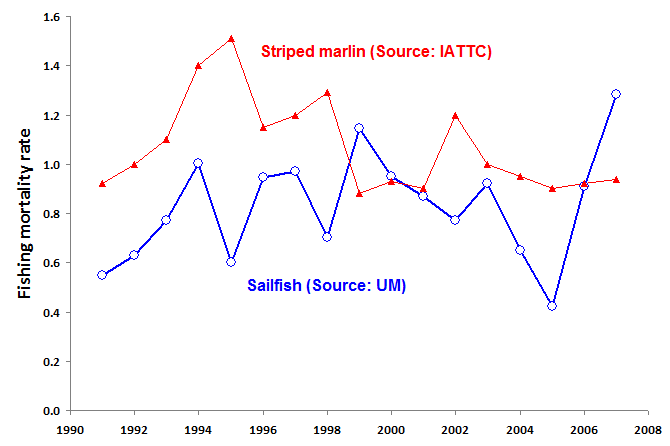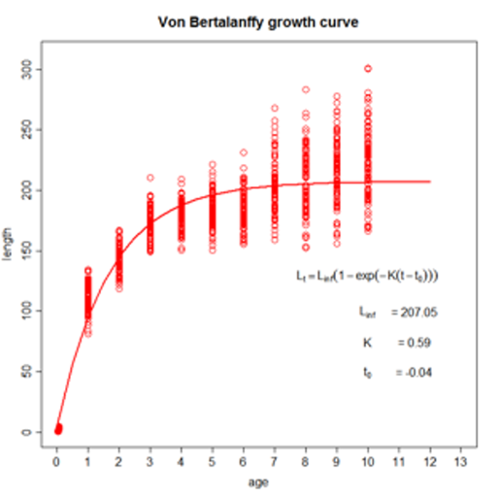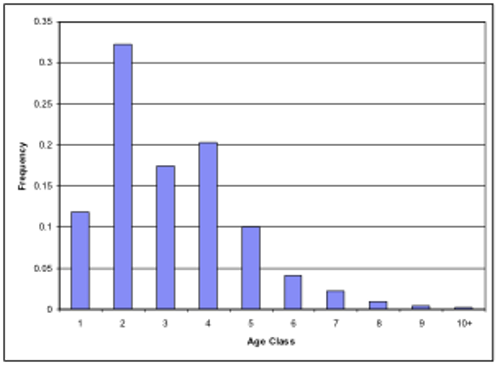Abstract:
The Indo-Pacific sailfish, Istiophorus platypterus, has been subjected to heavy exploitation throughout the eastern tropical Pacific as non-target catch in industrial high-seas longline and purse seine fisheries in additional directed fisheries in localized artisanal longline and drift net fisheries. In order to accurately assess population processes and mortality by discernable natural and fishery sources, a growth model is imperative. At present, reliable growth models for the species are absent in the region. In this study, spatially explicit observed sailfish length data series (n=9321 measurements eye-forklength in cm) from widespread purse seine fisheries in the eastern tropical Pacific from 1991 to 2007 are used to develop a growth model for sailfish. Methods include fitting mixture distributions representative of age groups partitioned by singular statistical distributions among length-frequency data in the R Statistical Computing environment (R Development Core Team 2010). A simulator is developed to utilize outputs from a series of fitted mixture distributions to recreate length at age by a series of Monte Carlo simulations for each simulated age class. A series of simulated von Bertalanffy growth functions are fitted as a result to estimate much needed growth parameters for the species. Resulting fits yield a von Bertlanffy growth function with asymptotic growth maxima for sailfish to be 207.05 cm eye forklength, with intrinsic Brody growth rate coefficient of 0.59, and a fitted age at size 0 to be -0.04 years. Combined simulated length at age distributions statistically fit to the original length frequency data series for which they are estimated from (Kolmogorov–Smirnov, p > 0.5) thus verifying the validity of the simulation procedure.
Why study growth?
Understanding sailfish growth is paramount in assessing the population dynamics of the species. Mortality estimations and migratory patterns are contingent on age and size of the animals. In order to assess the age composition, animals need to be sampled and assessed by observations of length and weight, thus rendering the immediate need to link age with the size of the fish.
Von Bertalanffy Growth Model for Sailfish in Eastern Pacific
Age Composition of Sailfish Caught in Eastern Pacific Purse Seine fleet
Natural and Fishing Mortality
Extensive coastal longlining operations by small scale fishers developed in the eastern tropical Pacific since the mid-1990’s. Presently, most of the coastal areas are incorporated in the fishing operations targeting Mahi-Mahi (Dorado) but are catching significant numbers of billfish and sharks as bycatch in the longline operations. This has resulted in large billfish landings by the mostly transformed artisanal and semi-industrial longliners such as those observed in the figure below.
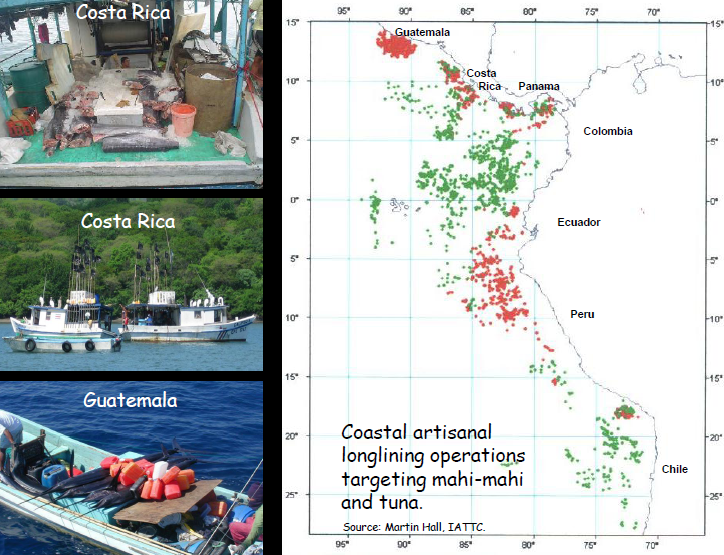
Eastern Pacific billfish fishing mortality rates are much larger than rational levels for their exploitation.
Data on size composition of Sailfish caught incidentally in tuna purse seine sets in the Eastern Pacific between 1991 and 2007 were made available to University of Miami scientists by the Inter-American Tropical Tuna Commission (IATTC). These data were measured by observers working for the IATTC aboard the tuna purse seiners and analyzed at the University of Miami Billfish laboratories.
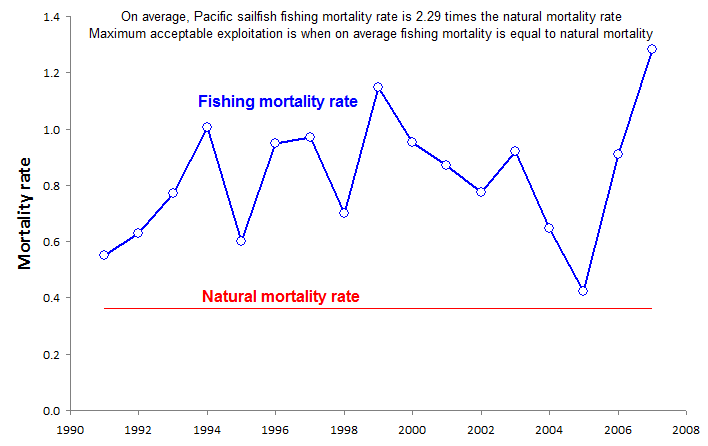
On average, Pacific sailfish fishing mortality rate is at least 2 times as large as the value of the estimated natural mortality rate (M=0.38). Maximum acceptable exploitation is when on average fishing mortality is equal to natural mortality.
Fishing mortality rates estimates for the Striped marlin in the Eastern Pacific by the Inter-American Tropical Tuna Commission correspond well with the equally high fishing mortality rates estimated for the Sailfish. Despite great differences in data and methods used to estimate these rates, the trends are indicative of very high levels of exploitation exerted by the fishing fleets operating in the region.
